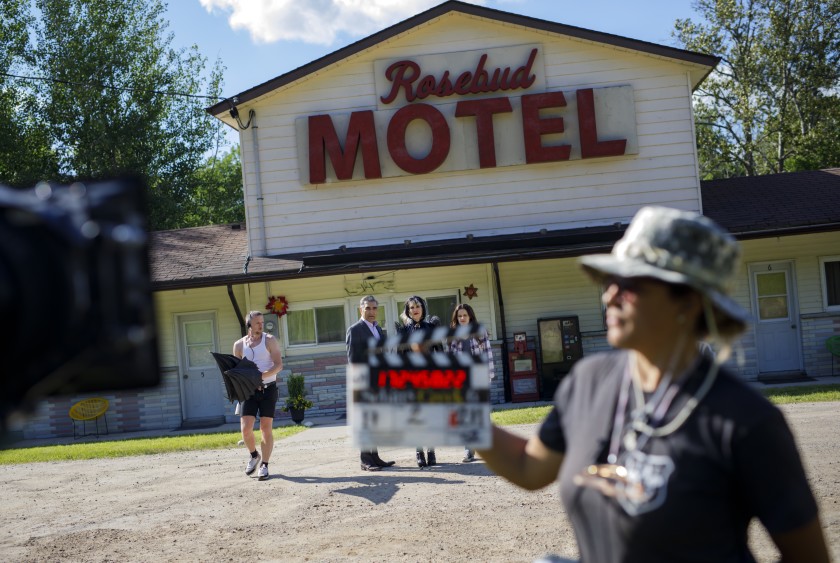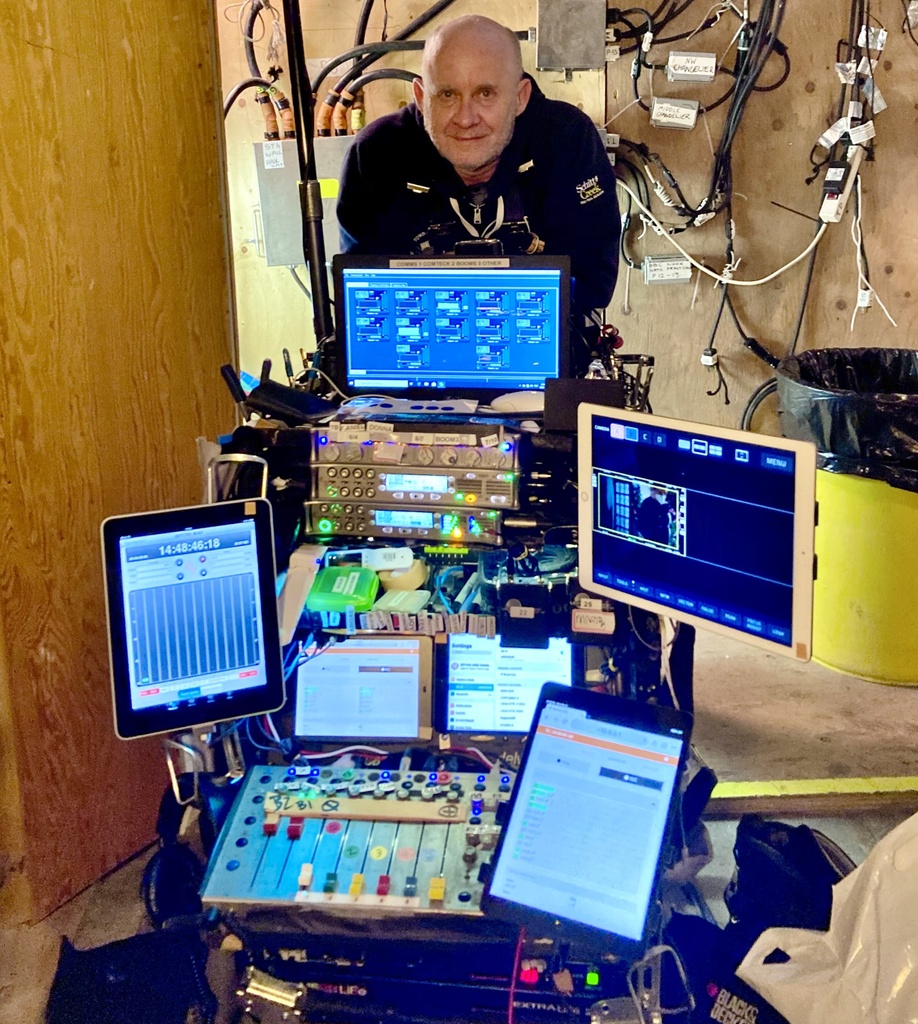“Let me say that we don’t have many ‘Oh, Schitt’ moments with sound because Lectrosonics prevents them from happening in the first place,” says sound mixer Bryan Day, who recalls being asked to join the production of Emmy-sweeping sitcom, Schitt’s Creek whilst at the dentist.
“I am a fan of the show; a show of dysfunctional, inclusive, family love,” begins Day. “I hoped to work on the show, and that hope was realised when the previous sound mixer at literally the last moment, became unavailable. I was a last minute replacement!”
With the previous sound mixer suddenly moving on to another job, the production needed to find a competent mixer to come on board and join the team, ASAP. Having worked with Schitt’s Creek’s boom operator before, Day was recommended for the job – and it was an immediate yes from him.
“I got the call to do season six two days before production was scheduled to begin,” he stresses. “It was literally: ‘Wanna do Schitt’s Creek?’ I said, ‘Schitt yeah!’ Since so much of the script is ad-libbed, we rely heavily on boom mics, for which we use the Lectrosonics HMa plug-ons. Then, every actor in the scene is also wearing a Lectrosonics SSM. If one of them says something that’s just priceless and the boom doesn’t capture it, the SSM does. I depend on them without hesitation.”
Schitt’s Creek follows the trials and tribulations of the formerly wealthy Rose family when they are forced to relocate to Schitt's Creek, a small town they once purchased as a joke. Now living in a motel, Johnny Rose (Eugene Levy) and Moira Rose (Catherine O'Hara) – along with their adult children, David (Dan Levy) and Alexis (Annie Murphy) – must adjust to life together without money.
Given the Levys’ creative hand in the show (it was devised by them both), a key part of Schitt’s Creek’s appeal is its heavy use of ad-libbing, meaning the sound department needed to be ready for anything.
“The first challenge with Schitt’s Creek was to unpack,” laughs Day. “I was suddenly on my way out of town to do a location show at the end of winter in a forest, so I went from a tightly scripted ‘whodunnit’ to an ad-lib comedy show, which wasn’t tricky actually – it’s fun! It keeps me on my toes, and it’s great to laugh out loud at the end of a take.”
To ensure the ultimate reliability, Day packed an arsenal of Lectrosonics Digital Hybrid Wireless equipment, including Venue and Venue2 modular receivers, four LR belt-pack receivers, three HMa plug-on transmitters, and eight SSM micro transmitters.






